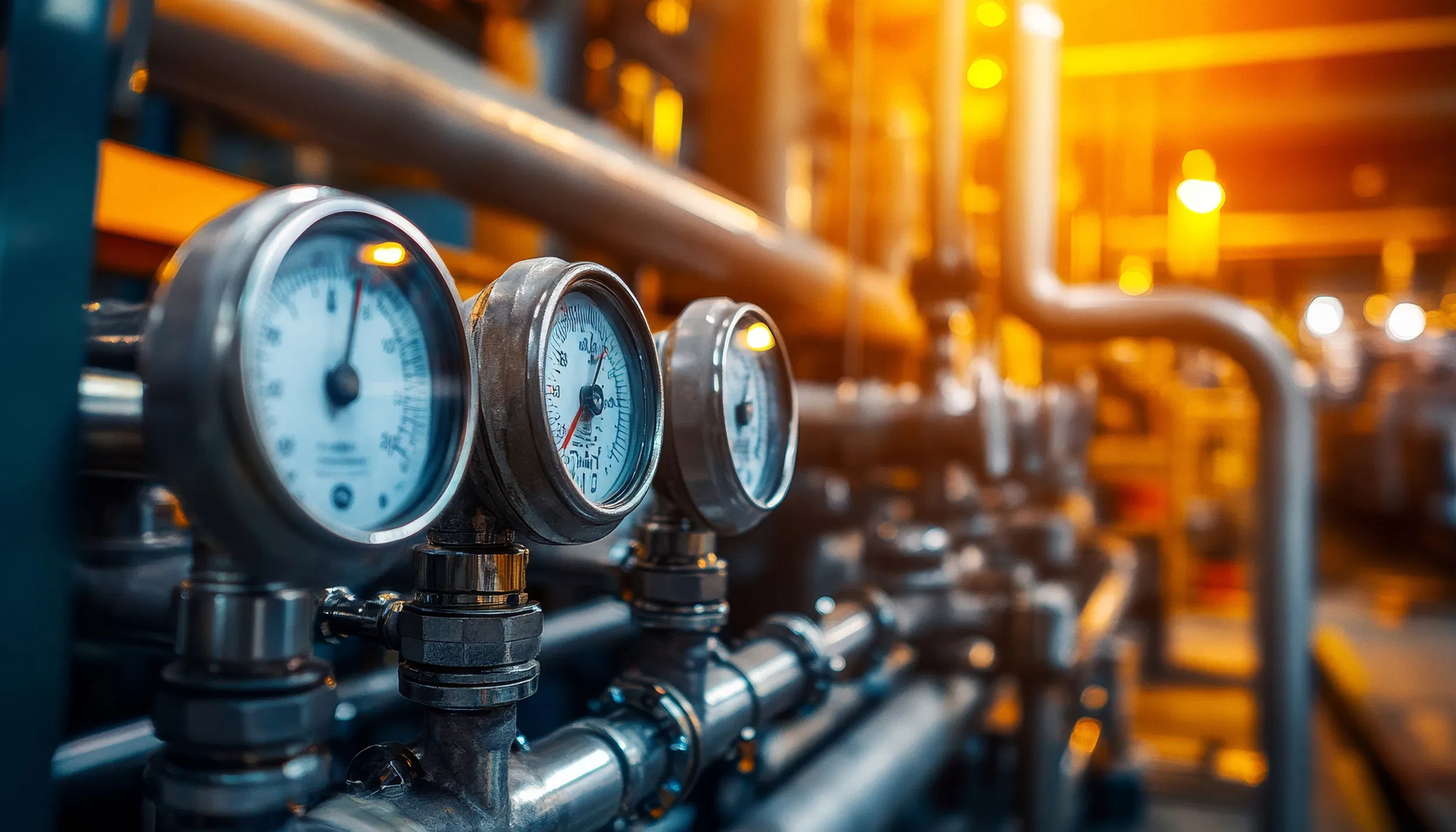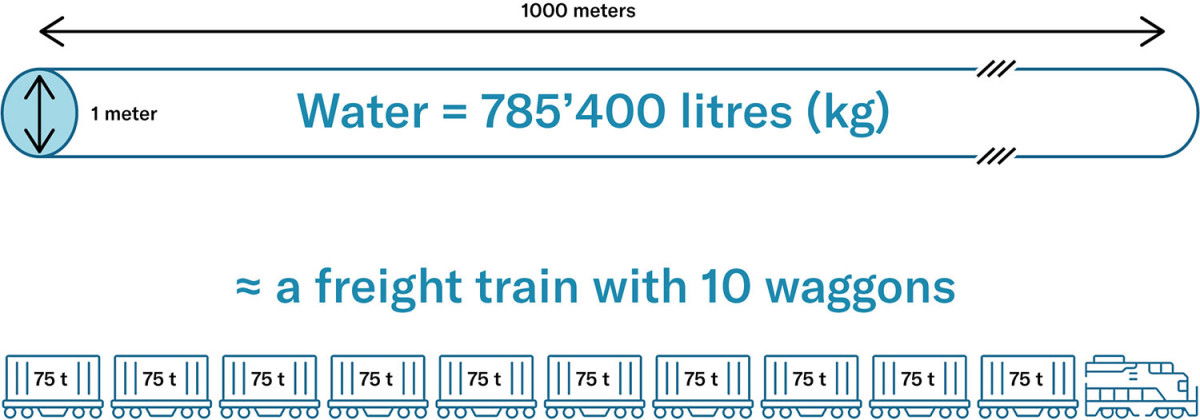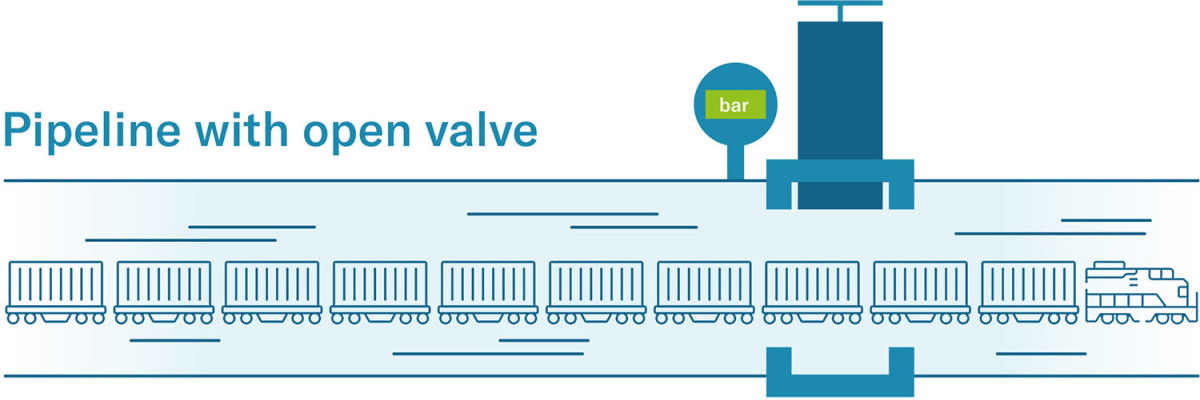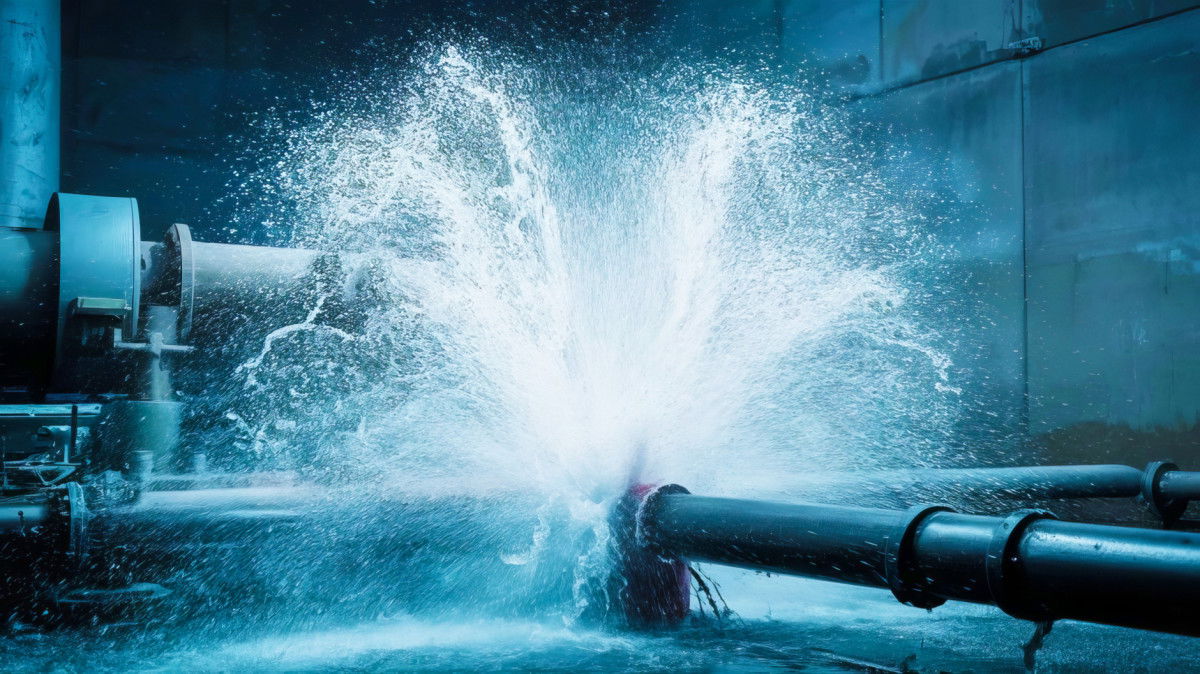Pressure Peaks in Closed Systems
11. 2月 2025

The underestimated danger in pressurised systems – and how to avoid it
Pressure peaks in closed systems can cause significant damage and are more complex than they initially appear. But what exactly are pressure peaks? How do they happen, and how can we protect systems against them? It’s time for us to take a look at this topic and explain how precise measurements play a role in ensuring safety and efficiency in pressure systems.
What are pressure peaks?
Pressure peaks are abrupt, brief and intense rises in pressure in a closed system. They occur more often under dynamic pressure loads, when the flow speed changes suddenly. These kinds of pressure peaks are common in liquid and gas supply pipes, but can also occur in other applications such as hydraulic or pneumatic systems. A sudden increase in pressure can have a major impact on the safety and durability of a system, as well as causing damage such as leaks and broken components – or even causing entire systems to fail.
In liquid-carrying systems in particular, such as water pipes, large forces are generated because liquids have a higher density and therefore more mass by volume than gaseous media. The result is relatively large amounts of force being introduced into the system. In addition, liquids have very little compressibility, meaning that the transmitted forces are passed on directly without being damped to any appreciable degree.
How pressure peaks occur
Pressure peaks happen when the movement of the fluid in a system is abruptly stopped or changed. This can occur when a valve is opened or closed quickly, for example. A pressure wave is generated and spreads through the system.

The physics behind the phenomenon
To help you understand what’s going on, let’s take a brief look at some of the underlying physical principles.
Newton’s three laws of motion
Law of inertia: A body (in this case the fluid) remains at rest or in constant motion unless an external force acts on it.

Principle of action: Force equals mass times acceleration.

Principle of interaction: Every action has an equal reaction; every force that acts when two masses interact generates an opposite force of equal magnitude.
Or, to put it another way: If body A exerts a force on body B, then body B exerts an equal and opposite force on body A. The force and the counter-force have the same magnitude but are directly opposed.

Bernoulli’s principle
Bernoulli’s equation describes the conservation of energy in a flowing fluid. To put it in simplified terms, it states that in a flowing medium, the total pressure (made up of the static, dynamic and hydrostatic pressure) remains constant.

This means that if the flow speed increases and the hydrostatic pressure stays the same, the static pressure has to decrease because the kinetic energy of the fluid increases.
This principle also plays a role in the function of aeroplane wings. The asymmetrical wing profile and the setting angle ensure that air flows faster over the top surface than the underside creating a pressure difference. A negative pressure forms above the wing, while higher pressure exists below it. Additionally, the air flow is deflected downwards, generating an upward lift force in accordance with Newton's 3rd law. The combination of the Bernoulli effect and the conservation of momentum enables flight.

Going back to our specific case, this principle comes into play in particular when gas bubbles form in the medium – and this occurs in combination with another phenomenon, which we explain below.
Pressure surges
Pressure surges are the classic example of pressure peaks – another name for this is “water hammer”. The phenomenon occurs when a liquid is forced to stop flowing suddenly, or the flow speed changes drastically, resulting in a sudden increase in pressure.
If the medium is in motion and is stopped by a resistance, the kinetic energy is converted into pressure. This force continues backwards in the medium from the obstacle and propagates in the system as a pressure wave moving at the speed of sound.
If the energy in the system cannot be dissipated by compressing whatever degree of gas is present, the only other option is for the pipes and fittings to deform. In the worst cases, complete material failure can occur and components or connections can burst. But even purely elastic deformations, i.e. oscillation and vibration, should not be underestimated, since they often cause micro-breakages in the material in the form of small cracks. This creates new avenues for damage due to subsequent pressure peaks or corrosion. Over time, the risk increases.
It is almost as though the pressure surge “probes” the system, searching for a weak point to break through. In this way, it can cover distances of several kilometres with ease, being reflected back and forth several times along the length of a pipeline before its energy is used up. This means that in pressurised systems, even components that are not in the immediate vicinity of the cause of the pressure surge can be affected.
A well-known example from everyday life is the often audible impact sound that occurs when a tap is turned off quickly at home. This phenomenon occurs in industrial pipes and fittings too – but here, the dimensions and forces are usually much greater. A typical risk case is the sudden stopping of a pump. While this directly changes the flow speed and the pressure, backflow of the medium in supply and return lines is often also responsible. If check valves or non-return valves are present in the line, they protect the pump from the medium flowing back. However, they themselves can cause a pressure wave in the rest of the system because they abruptly stop the flow.



Cavitation
Another lesser-known problem in liquid-carrying systems is cavitation. This occurs when the pressure in a liquid drops so drastically that vapour bubbles form. As soon as the pressure rises again, these bubbles suddenly collapse in an implosion that causes massive pressure peaks. The liquid flows at a high speed into the empty space created by the sudden absence of the gas. The flowing liquid is then abruptly stopped by the liquid flowing in from the other side, and its kinetic energy is converted into a pressure wave that propagates through the system.

This graphic illustrates the principle of cavitation. As a liquid flows through a constriction, it's velocity increases, causing the pressure to drop according to Bernoulli's equation. When the pressure falls below the liquid's vapour pressure, vapour bubbles form. Once past the constriction, the pressure rises again, causing the bubbles to collapse abruptly. Vapour bubbles can be caused by large fluctuations in pressure, underpressure or a vacuum. They often occur around fast-moving components such as turbines, ship propellers or flow pump impellers. This is due to the fluid being pushed away from the component and thereby subjected to heavy local acceleration. According to Bernoulli’s equation, static pressure decreases as speed increases, and this is what causes vapour bubbles to form.
When you think about vapour, you might automatically think about steam at high temperatures. However, it’s important to remember that the boiling point is also lower at reduced pressures. Although cavitation can happen more readily and its effects can be amplified at high temperatures, it is actually the pressure fluctuations that are the most critical aspect. Cavitation can occur in liquids at any temperature. Conversely, increasing the pressure can prevent vapour bubbles from forming, even at high temperatures.
Stable pressure regulation is therefore vital to preventing cavitation and increasing the service life of components. Even small vapour bubbles can cause incredibly high pressure peaks when they collapse, as well as high temperatures in their immediate vicinity.
Water column separation: water hammer with cavitation effect
A major disaster for any pipe system is water column separation – this is when water hammer occurs that results in a severe cavitation effect over a large area. This phenomenon is responsible for many catastrophic pipe breakages in large power plants and pipelines.

In addition to the actual pressure surge, this kind of water hammer also generates a pulling effect on the other side of the system. As the pressure increases in the direction of motion of the medium, because this is the direction of the medium’s kinetic energy, the pressure decreases correspondingly at the other end due to the “pulling” effect of the force.
In extreme cases involving relatively large volumes, the pressure can fall below the vapour pressure of the liquid. This not only causes small vapour bubbles to form in the medium, but also results in entire pipe sections being filled with vapour. This separation of the water column is extremely dangerous. When the vapour collapses and the liquid flows meet each other again, the result is an extremely strong implosion that virtually no system is designed to withstand. The damage is usually catastrophic.
In practice, pipeline systems are often much more complex than a simple, straight pipe with two ends. Therefore, separation of the water column can also occur at other points in the system, such as at bends, branches, closed pipe ends or elevated positions. This complexity makes it much harder to predict the precise locations and impacts of such effects.
Preventive measures
Simulations
Pressure peaks can be calculated and predicted. However, this quickly becomes complex if a precise analysis is needed, because there are numerous parameters and interactions to take into consideration. This is where modern computer simulations such as MATLAB (https://ch.mathworks.com/products/matlab.html) come into play.
Here, the system is reproduced virtually and simulations are run under various conditions, such as the sudden closing of a valve or the stopping of a pump. MATLAB works with small time intervals, computing how the pressure, flow speed and other parameters change over time during the operation of a system. This makes it possible to predict where and when pressure peaks might occur.
The simulation results can be used to make targeted optimisations on the system. With the information from the simulated pressure profiles, suitable counter-measures can be planned and affected sections can be equipped with safety devices. This means that pressure peaks can either be reduced from the outset, or the very worst impacts can be mitigated.
Computer analyses can provide precise results as long as they have been configured correctly. The model must be supplied with correct information about the system, the medium used and any potential outside influences. This is the only way to ensure that the results reliably reflect reality.
Protective components
Although it is virtually impossible to completely avoid pressure peaks in practice, their impacts can be significantly reduced through targeted measures. Some of the tried-and-tested methods for absorbing and mitigating pressure peaks include the use of pressure dampers, pressure reducers, slow-closing valves and many other protective components:
- Pressure reducers decrease the system pressure to a safe level in order to reduce the intensity of pressure peaks. They are often used in pipeline systems and industrial facilities to stave off uncontrolled pressure rises.
- Pressure dampers attenuate pressure peaks by absorbing and releasing excess energy. They often consist of elastic diaphragms or chambers containing compressible gas. They are particularly efficient in liquid-carrying systems where the mass and incompressibility of the liquid can amplify the effects of pressure waves.
- Slow-closing valves reduce pressure peaks caused when a valve is closed abruptly (“water hammer”). They use damping systems to help them close more gently and steadily.
- Safety valves open when a specific overpressure is reached and dissipate the excess pressure in a controlled manner. They protect system components such as pipes, pumps and vessels against damage due to overpressure.
- Check valves prevent liquid or gas from generating unwanted pressure peaks due to backflow. They often act in conjunction with pump systems when the flow is stopped abruptly.
- Accumulators store excess liquid or gas in a system and release it again as needed to balance out pressure surges. They are particularly helpful when pulsating pumps or highly dynamic systems are used.
- Pipe bends or flexible connections intentionally change the flow path or reduce the rigidity of pipelines in order to absorb pressure peaks.
Support from smart sensor systems
Sensors such as pressure transmitters or digital gauges are essential for protecting a system against pressure peaks. They make it possible to validate assumptions and simulation results, and to check whether the installed protective components are having the desired effect. When problems occur, they are often instrumental in tracking down the causes.
Continuous sensor monitoring at critical points during operation offers numerous advantages. In this way, pressure peaks can be recorded in real time and automated responses such as opening or closing valves can be triggered. Failures of system components and protective components are not only detected directly, they can also be prevented in ideal cases. Changes in the data over the long term can indicate wear and point to minor defects that can be repaired before it is too late.
Effective monitoring calls for an intelligent system that automatically alerts the responsible personnel if anything seems unusual, for example via the mobile network, e-mail or via an IoT interface and cloud application. This guarantees a fast response time in order to minimise any potential damage.
Maintenance and servicing
The careful selection and positioning of protective components, and regular maintenance and calibration of all systems, also play a vital role in minimising pressure peaks and preventing damage.
Measuring devices as tools for recording and analysing pressure peaks
With our piezoresistive pressure transmitters, digital manometers and logger and software solutions, we offer the right tools for precise pressure measurements in closed systems and for recording and analysing pressure peaks.
KELLER sensors supply precise data and have long-term stability, making them perfect for reliable system monitoring and pressure peak detection. Software solutions such as data analysis are also important for planning preventive measures and optimising the system.
Pressure recording
A piezoresistive pressure transmitter measures the pressure trend, including pressure peaks. With a limiting frequency of > 1kHz, standard pressure transmitters from KELLER provide the basis for detecting rapid pressure peaks. The Y-Line comes with 1 kHz as standard, the X-Line for the 3-wire voltage output with > 1 kHz. For even faster measurements, the 21PHB is available with 20 kHz.
Data display
Digital gauges display the values in real time and save the maximum displayed value.
Analysis and optimisation
Software analyses the data in order to understand pressure peaks and derive counter-measures.
Summary
Pressure peaks pose a major challenge in many industrial applications. However, they can be controlled through a combination of good planning, preventive measures and state-of-the-art measuring technology. Targeted monitoring and analysis help to prevent damage and significantly improve operating safety.











